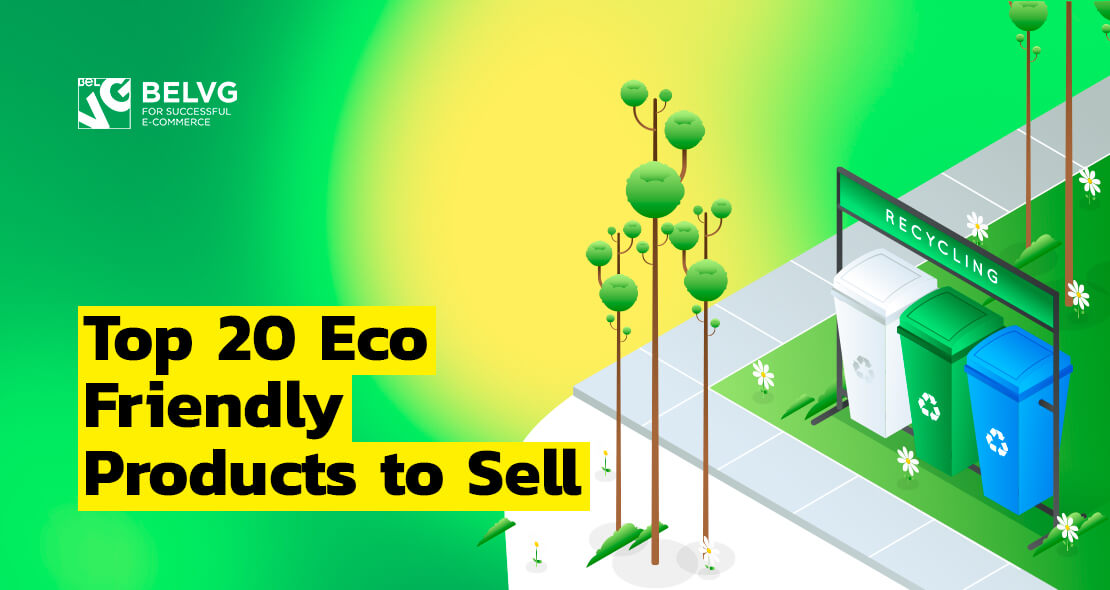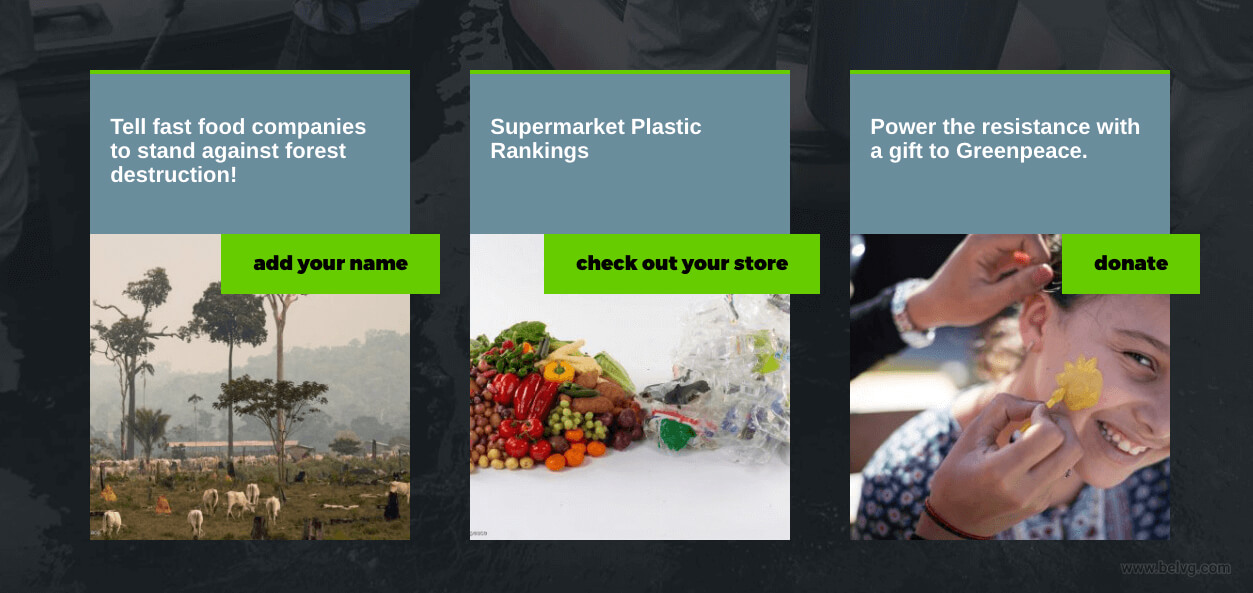courtesy : BELVG
Why Go Green: Top 20 Environment Friendly Products

What does it mean for a company to go green? The words organic, natural and eco friendly are everywhere and the market of reusable items is booming. Find out why you should make your business more environmentally friendly and what earth friendly products are trending today in this article.
The popularity of eco friendly products is good news not only for the people concerned about ecology but also for retailers. It is profitable to sell reusable and disposable items since most of the people today care about what they buy, use and eat, but on top of that, it also gives a nice feeling of contribution to the global environment protection.
What is Go Green?
Why Should Brands Go Green?
Top 20 Eco Friendly Products to Sell Online
What is Go Green?
Go Green is a famous slogan and a common name of environmental movements around the globe. It unites people who care about nature, want to produce less waste and reduce our ecological footprint on the planet. The main idea of Go Green is to use eco friendly products, following a sustainable way of living, and, of course, the Zero Waste concept.
Eco friendly has become a buzzword in advertisements, social media and on TV. Customers love the products with green leaves printed on, minimalistic designs and soft colors that make them think that no chemicals were used in production. However, the first and foremost is to produce genuinely environmentally friendly products, not just make the product look like it is organic.
Eco friendly business is the one where the decisions are made with the awareness of the consequences to nature. Use of this word makes most people believe that the product is not harmful to the environment and can be recycled. Make sure that you are telling the truth when putting this word on the packaging of your product – do not disappoint your customers and meet their expectations.
Sustainability is one of the most challenging lifestyle concepts to follow. Making your business greener is good, but making it sustainable is a much greater goal which is harder to accomplish. The product can be called sustainable only when it is made from renewable environmentally friendly resources, but besides that, the manufacturing process should also result in some environmental benefits, require minimum energy and cause no pollution.
Zero waste concept focuses on prolonging the life cycle of the purchased item. It’s a significant part of 5R formula: Refuse, Reduce, Recycle, Reuse, and finally, Recompost. Zero Waste activists strive to reduce the number of landfills and incinerators and communicate the idea of multifunctional usage of the products. They do not believe that recycling is an all-pervasive solution. Zero Waste is also about learning to say no to impulse and unplanned purchases and refusing single-use items, plastic packaging, and if possible, packaging at all.
So, how to get to the point of all of this?
Like everything else, the answer is online. In social media or eco blogs of environmental movements or different organizations like famous Greenpeace, you can find the pollution statistics and check out the examples of green companies to get inspiration.
At the same time, we recommend you to be careful with the sources you get information from. Since the number of eco organizations is increasing, there are also a lot of fake ones – the companies that only pretend to be environmentally concerned. Misleading the customers by claiming the company ‘bio’, ‘vegan’, ‘eco’ or so is known as greenwashing.
The market now is stuffed with so-to-say “green” companies portraying their products not to harm and even contribute to the clean nature, emphasizing their efforts in green initiatives. How do they pretend to be green?
- Some companies produce vegan cosmetics but use toxic ingredients such as sodium lauryl sulfate, propylene glycol, and cocamide DEA.
- Back in 2018, new straw-less lids were introduced as a part of a plastic straw ban campaign. But this lid actually contains more plastic than an old straw and lid together.
- Some coffee pods manufacturers claim to produce 100% compostable coffee pods. But in reality their pods are decomposable only at industrial facilities, but not in the compost in your backyard.
We hope that you will not become one of them. This is a dark-side marketing strategy that retailers should avoid all around. Many greenwashers actually spend such an incredible amount of their precious time and money on making their product look greener, that they could invest in making it genuinely environmentally friendly.
If you still think that fake eco products can be cheaper and greenwashing marketing strategy can boost your profits, you should know that today people can easily check the credibility of the “green” company online. Such websites as Greenwashing Index and Sins of Greenwashing provide this information for free. The lawsuits from the concerned customers who notice the lying label can cause much greater pain to your wallet than going green for real.
Why Should Brands Go Green?
Going green can turn from a huge problem into an excellent business solution. Promoting eco friendly products is, first of all, a great contribution to reducing the carbon footprint and helping people to uphold our role as high-minded and thoughtful stewards of the planet. But it can also make a profitable business – with the right marketing approach.
Many of your customers believe that going green implies immediately throwing away half of the closet, switching to a restrictive lifestyle and never ever again enjoying those simple things that they love. You can prove them wrong and inspire to try something new and help turn their life on the better, more sustainable path. The industry of eco-products is the one where brands become more than just companies people buy from – they share their values and make customers listen.
Eco-friendly movement is winning more and more economies all over the world. Thus, the demand for eco friendly products is rapidly booming, and greenwashing brands lose customers and money. According to the Environmental Performance Index, Europe is the leader in protecting the environment. The EPI includes almost all countries and measures the actions they take to go green. Such actions also influence the market trends and consumer behavior. At the top are European countries such as Switzerland, France, Denmark, Malta. While the US takes 27th position in the ranking, which is not that bad.
Speaking about the US, the eco friendly trend is already gaining popularity. Statistically, over 48% of US consumers are ready to start buying only eco friendly products to save the environment. Today, sales of products with eco friendly labels make up 22% of the total store sales[1]
. The popularity of sustainable goods has grown 3% points since 2014. On top of that, it is expected that eco friendly products will make up 25% of store sales by 2021 [2]
.
Go green has already become a classy trend. Customers recognise green brands and appreciate them. The demand for eco-friendly products is high as never before, especially among Millennials and Generation Z [3]
. They are the ones who will experience the consequences of trashing the planet most, and since Millennials and Generation Z representatives are the main social media and internet users, their awareness about eco problems is much higher than with other generations.
Considering Baby Boomers and older generations, we see a large gap in attitude towards sustainable purchases. Statistics show that Millennials are twice likely – 78% of respondents – to change their shopping habits. While only 33% of Baby Boomers would like to buy an eco friendly products to contribute to environment protection [4]
. Millennials are also willing to pay more for sustainable goods – 90% of customers, while only 60% of Baby Boomers agree to spend more. But, telling the truth, 60% is a rather high score, and we are making progress in protecting the environment of the US and other countries.

